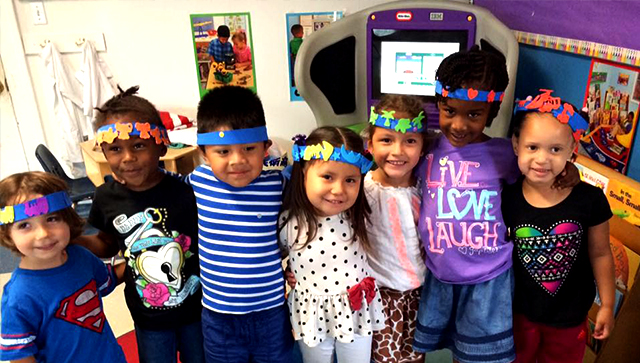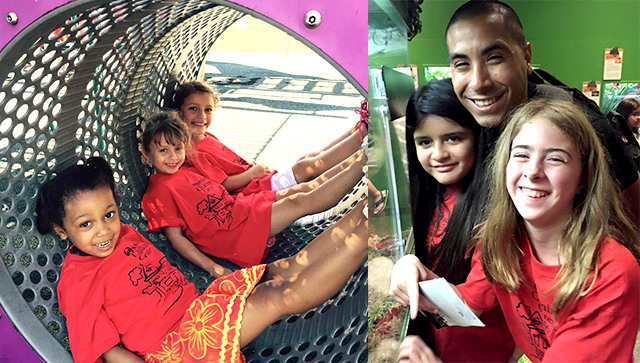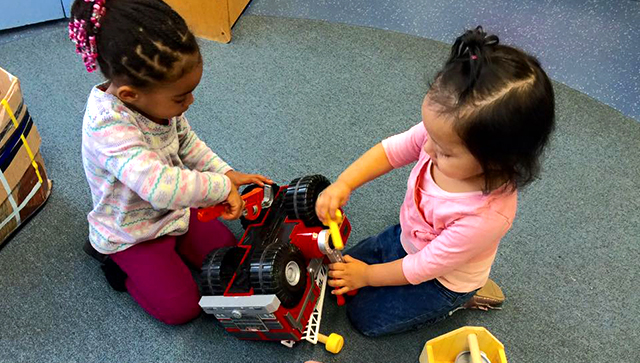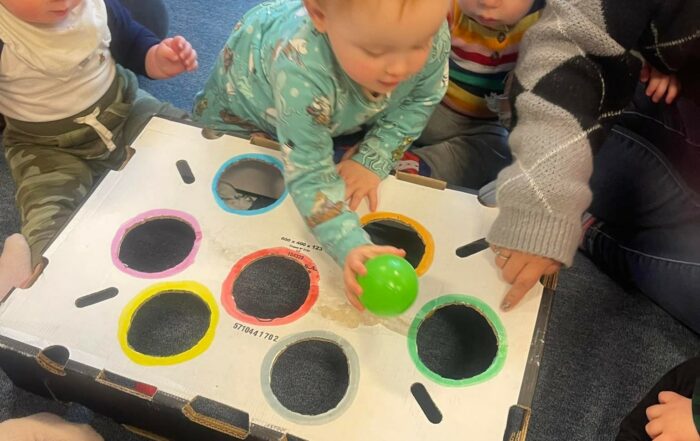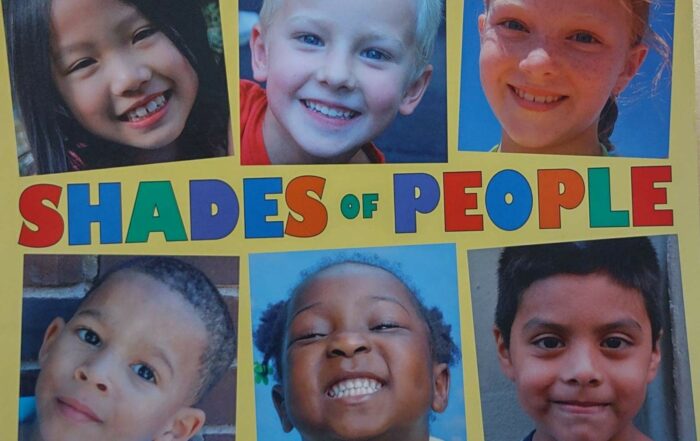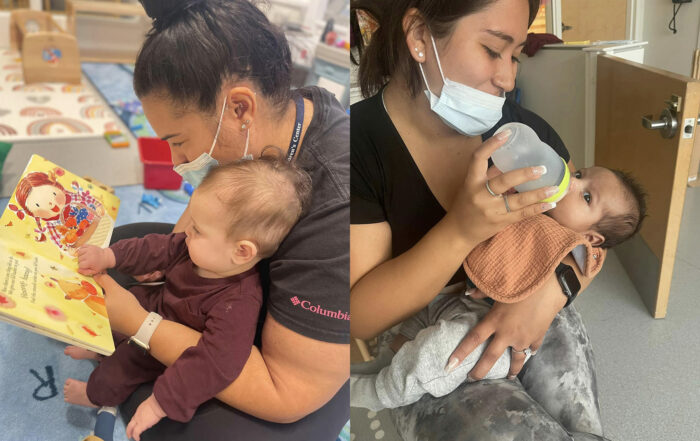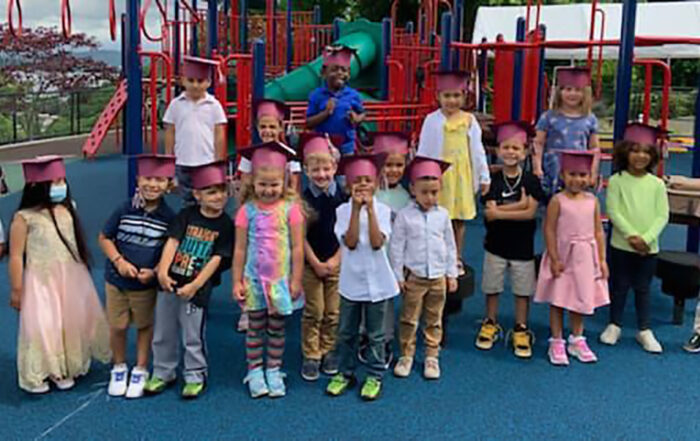Message Board
Book Review: The Daycare Myth

Book Review: The Daycare Myth
Review by Shawn Cribani Director Of Development
Blog Post: January 2025
Review: The Daycare Myth
Dan Wuori has become a popular presence on social media. He posts videos of
adorable infants and toddlers accompanied by his comments explaining the
developmental tasks the children are engaged in.
Wuori is a former kindergarten teacher, school administrator, and state agency
administrator. He has now consolidated his knowledge of early childhood
education, the child care industry, and public policy into a truly unique book:
The Daycare Myth: What We Get Wrong About Early Care and Education
(and What We Should Do About It).
There is no such thing as daycare.
Wuori says the “Daycare Myth” is that there is no such thing as daycare.
American early childhood policy has been premised on the myth that birth to
age four requires custodial care. Current science tells us that whatever
environment an infant, toddler, or preschooler spends their days in, it is – in
fact – an educational environment.
If it is an environment with nurturing adults who engage with the child and
provide stimulating activities, then it’s a good educational setting. If it is a
strictly custodial environment where several children are with one caregiver
who keeps them in a playpen and/or plops them in front of a TV for hours – it
is also an educational environment – a terrible educational environment.
Children raised in those kinds of conditions are deprived of the essential
stimulation their brains need for optimal development.
From birth to age four, brains are still under construction – the nurturing and
stimulation those young brains receive (or don’t receive) will determine their
lifetime cognitive capacity. Child care teachers are charged with the most
important educational work in our society – building the brains of the next
generation. A study of brain scans that tracked preschoolers through their teen
years showed that the development of the cortex in late teens was closely
correlated with a child’s cognitive stimulation before the age of five.
Child care teachers are woefully underpaid.
Being a teacher of infants, toddlers or preschoolers requires a body of
knowledge about early childhood development and a plethora of practical
skills to meet the unique developmental needs of each child. Yet, most child
care teachers are paid less than fast food workers. This is because we don’t see
early care and education as a public good – as we see K-12 education. The
burden of funding the most important years of a child’s education is placed
almost entirely on parents.
Advice for parents, child care teachers, and policymakers.
What makes Wuori’s book unique is that he cleverly weaves together the
history of child care, the science of early childhood development, the
challenges faced by working parents, and the struggles of child care providers.
Each chapter has a section addressed to parents, one addressed to early
childhood professionals and one addressed to policy makers. He pulls all of
this together to make a compelling argument for an overhaul of public policy
regarding child care and making a significant public investment in early
childhood education.
The Case for Public Investment in Early Care and Education
Citing the work of Nobel Laureate Economist James Heckman, Wuori argues
that we’re already paying for our early care and education non-system in
remedial education, low high school graduation rates, high unemployment
rates, an underperforming economy, and long-term health problems (yes –
adults who were in good child care environments as infants and preschoolers
suffer fewer health problems than their peers).
This book is a must-read for people who care about the future of our country.
To purchase Wuori’s book through your local bookseller, click here: https://bit.ly/3CDTivV
To purchase Wuori’s book from Amazon, Click here: https://amzn.to/4jWayNY
Nurturing Curiosity in Children, from Early Exploration to Future Scientists
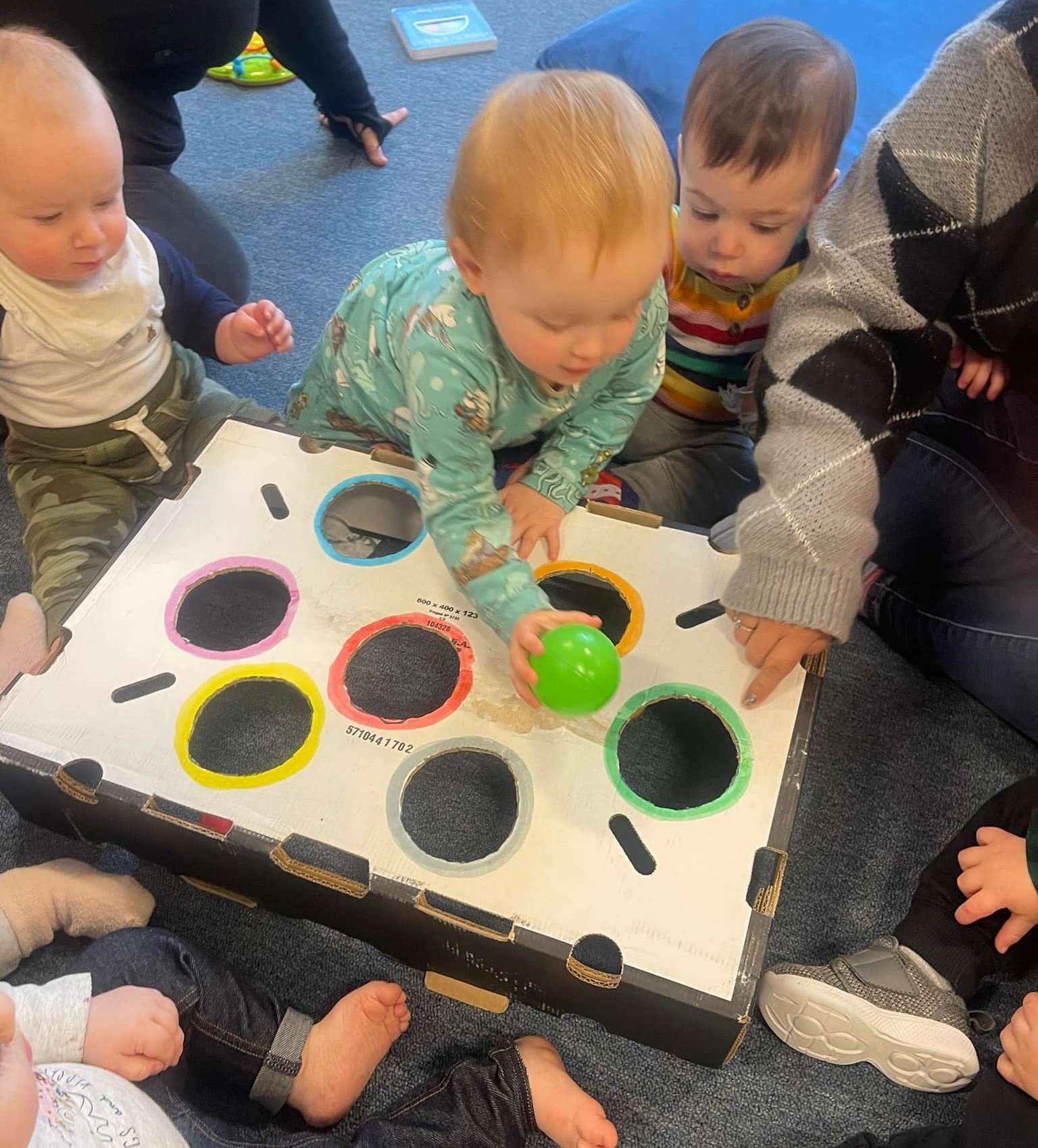
Our infant teachers created a homemade game for our babies to match the colors and fit the balls into the circles. The activity introduced the infants to object permanence as the balls disappeared into the box only to reappear seconds later. In addition, the activity helped to develop the children’s hand-eye coordination and gross motor skills as they reached across the box to the appropriate hole.
Nurturing Curiosity in Children, from Early Exploration to Future Scientists
From the moment children begin exploring the world around them, they exhibit curiosity, ask questions, and experiment with cause and effect. Just like scientists, they observe, hypothesize, and test their ideas. Whether they are investigating how a toy works, observing insects, or mixing colors, children engage in hands-on exploration, learning, and discovery. Their innate wonder and their drive to understand “why” and “how” mirrors the scientific process. By encouraging children’s natural curiosity, OCC caregivers, teachers, and staff are helping to lay the foundation for critical thinking skills and lifelong learning.
Two Ossining Children’s Center alumni, Anabel Reed and Shae Shandroff, both of whom graduated from Ossining High School this June, placed among the top 300 scholars nationally in the Regeneron Science Talent Search.
These students’ impressive accomplishments highlight the long-term impact of fostering a love for learning and exploration. Anabel, for example, cites the curiosity and critical thinking skills she developed as a preschooler at OCC as the seeds for her passion for scientific inquiry. Anabel and Shae’s success is a testament to the importance of nurturing curiosity from a young age.
To learn about the educational philosophy that stimulates and encourages the emerging scientific mind-set, read about OCC’s philosophy here:
ossiningchildrenscenter.org/mission-philosophy/
Create an interesting environment.
Babies spend one-fifth of their waking hours in focused observation. They’re curious about the world around them. Pictures on the wall; mobiles over their crib; toys with interesting shapes, textures and colors are all naturally fascinating. Give your baby safe toys and objects to explore. Rotate your supply to keep it “fresh.”
Redirect, don’t discourage.
Notice what is catching your child’s interest and create a safe way for her to explore. For example, if your toddler seems interested in your houseplants, make them inaccessible to your child, but provide an alternative. Put some dirt in a plastic box for your child to play with. If she likes to pour the water from her cup onto the high chair or floor, move her to the bathtub or backyard after the meal so she can experiment with water without making a mess. This will also teach children problem-solving skills, creative and acceptable ways to do and get what they want.
Allow time for open-ended activities.
Unlike some toys that are designed to be used a certain way, materials like boxes, blocks, water, sand, pots and pans, and art materials, can be used imaginatively.
For more tips on nurturing your child’s natural curiosity, check out the Zero to Three website: https://www.zerotothree.org/resource/tips-on-nurturing-your-childs-curiosity/
How We Can Discuss Subjects Like Race And Identity With Small Children “Our Skin Is Just Our Covering Like Wrapping Paper”
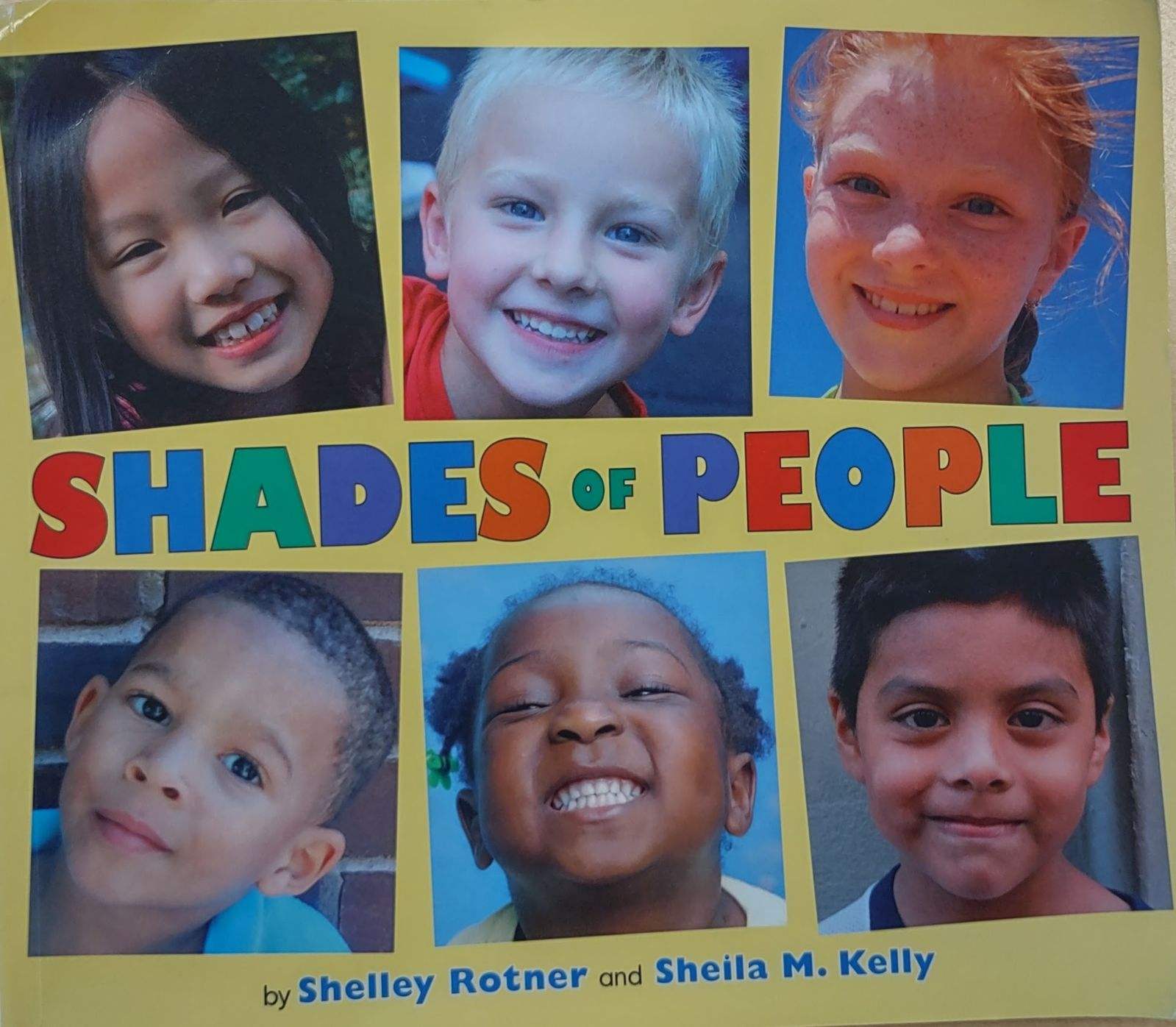
How We Can Discuss Subjects Like Race And Identity With Small Children
“Our Skin Is Just Our Covering Like Wrapping Paper”
Editor’s Note: This piece by our after-school kindergarten teacher, Rebekah Shactel, shows
how we can discuss subjects like race and identity, even with five-year-olds.
At the beginning of each school year, there are two books I read to my kindergarteners: “Colors
of Us,” by Karen Katz, and “Shades of People” by Shelli Rotner and Sheila M. Kelly. Both
books talk about all the different colors that people can be.
One of the books makes an interesting distinction; we are not really different colors, but different
shades of the same color. One of the books said something that this year’s class loved, “Our skin
is just our covering like wrapping paper. And, you can’t tell what someone is like from the color
of their skin.”
After we read the books, the kids work on a project: their “little people.” Each child gets a plain
person-shaped handout, and then we look through all of our skin-toned pencils to see which one
matches each child. There were some very interesting discussions while we were coloring. “Why
don’t the pencils match us exactly?” “Why are we different colors?”
Once their little people are all colored in, the kids get their little people dressed, and create their
faces and hair. Between bow ties, pink hair, suspenders and sparkly noses, our little people are
looking good! They will hang up in our classrooms, and remain there until our last day of school
– our first project together, and the final piece of artwork sent home.
The following studies show that children in integrated classrooms are less likely to drop out,
more likely to enroll in college, and earn higher test scores:
- R. A. Mickelson, “Twenty-first Century Social Science Research on School Diversity
and Educational Outcomes,” Ohio State Law Journal 69, (2008): 1173–228. - G. J. Palardy, “High school socioeconomic segregation and student
attainment,” American Educational Research Journal, 50, no. 4 (2013): 714. - G. J. Palardy, “Differential school effects among low, middle, and high social class
schools,” School Effectiveness and School Improvement 19, 1 (2008): 37. - NAEP Data Explorer, National Assessment for Educational Progress,
2017, http://nces.ed.gov/nationsreportcard/naepdata/; C. Lubienski and S. T.
Lubienski, “Charter, private, public schools and academic achievement: New
evidence from NAEP mathematics data,” National Center for Study of
Privatization in Education, Teachers College, Columbia University, January 2006.
Entrusting Your Infant to a Day Care Provider: Parental Separation Anxiety
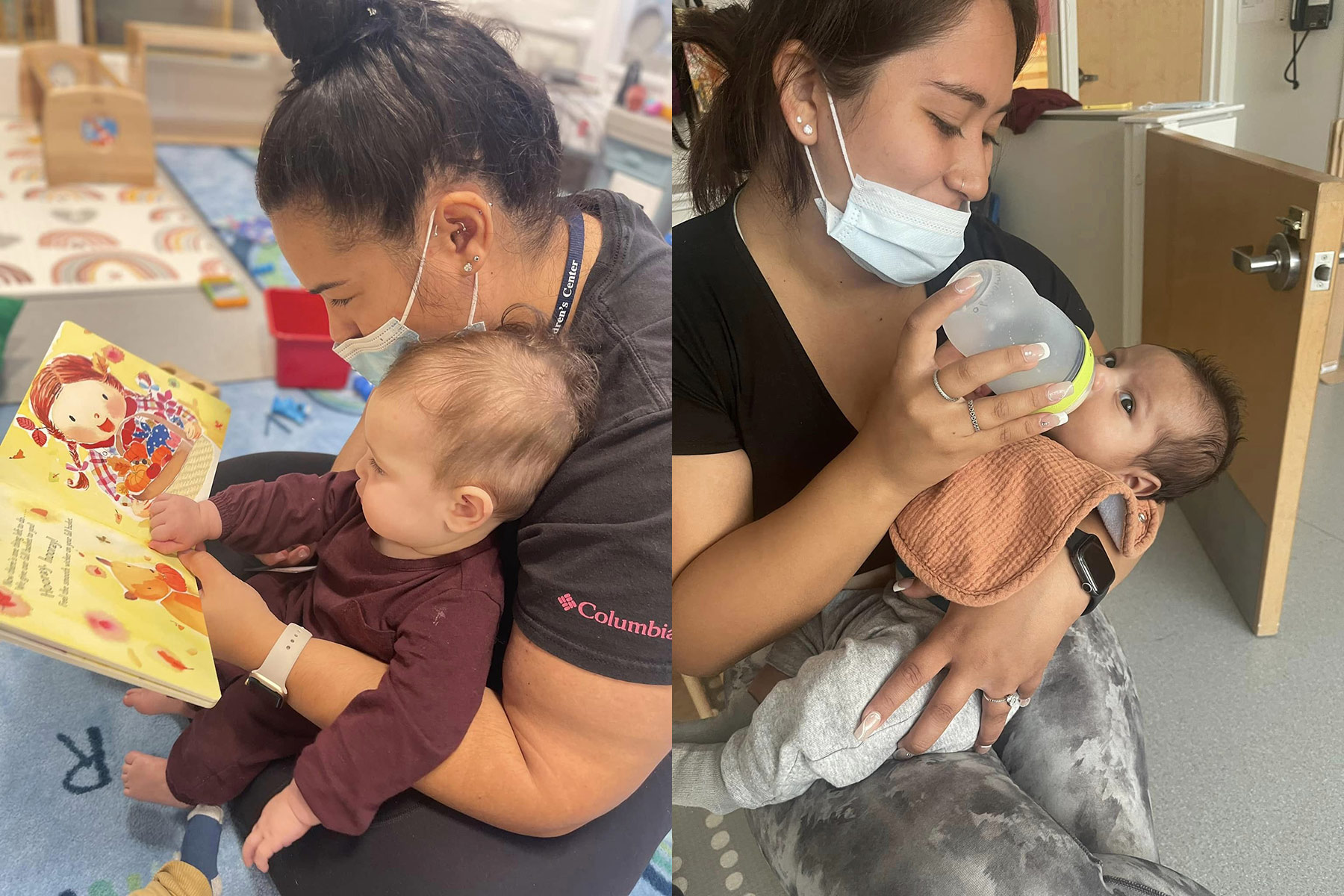
Entrusting Your Infant to a Day Care Provider:
Parental Separation Anxiety
by Claudia Tillis Berk, Assistant Executive Director
Ossining Children’s Center
As a mother, grandmother, and child care teacher/administrator for 43 years, I have tremendous empathy for parents who are leaving their infant in our care for the first time. Your desire to protect your baby is strong and intense. And rightfully so. Anxiety about leaving your baby in someone else’s care is normal.
At the Ossining Children’s Center, we understand that the adjustment to day care is a challenge for both parent and baby. And we support you through that process. After an initial meeting and tour of the program with me, parents will meet with their child’s prospective teacher/caregiver. If the parent finds that OCC is a good fit for their family, we work with the parent on a plan for transitioning the baby to our care.
A Gradual Transition to Day Care
Ideally – for the baby’s first week at OCC – we suggest that the baby come for a few hours each day, gradually lengthening the time that the child is with us each day. Sometimes – due to parents’ work schedules – a full week of transition isn’t possible. We can adjust the transition time to two or three days, if necessary. If you wish, you can leave an item of clothing with mom’s smell (we never leave such items in a crib with the baby!).
You might be surprised to know that most babies make this adjustment more easily than the parents do. Babies are able to transfer – to a nurturing adult – the trust and attachment that they have for their parents. However, you needn’t fear that your baby will form a closer bond to their teacher/caregiver than to you, their parent. You will always be number one in your baby’s affection. That being said, you do want your child to form an attachment with their teacher/caregivers – that way you know your child will be happy when you are away from them at work.
We also know that it is impossible to concentrate at your job if you are worried about your baby. We want you to call us if you have a concern. If you’re still concerned after speaking to your child’s teacher, I can pop into the infant classroom and take a photo of your child playing happily, and text the photo to you.
We Never Let a Child Cry Inconsolably
When a baby is upset, we can almost always comfort them. If our cuddles, lullabies, and gentle rocking fail to calm a baby (a very rare occurrence), we will call the parent. The child may be coming down with an illness, or just having a bad day.
You will find that, once your child is here with us for a few months, you will feel a part of our OCC family.
Helping Your Preschooler Adjust to Day Care or Preschool
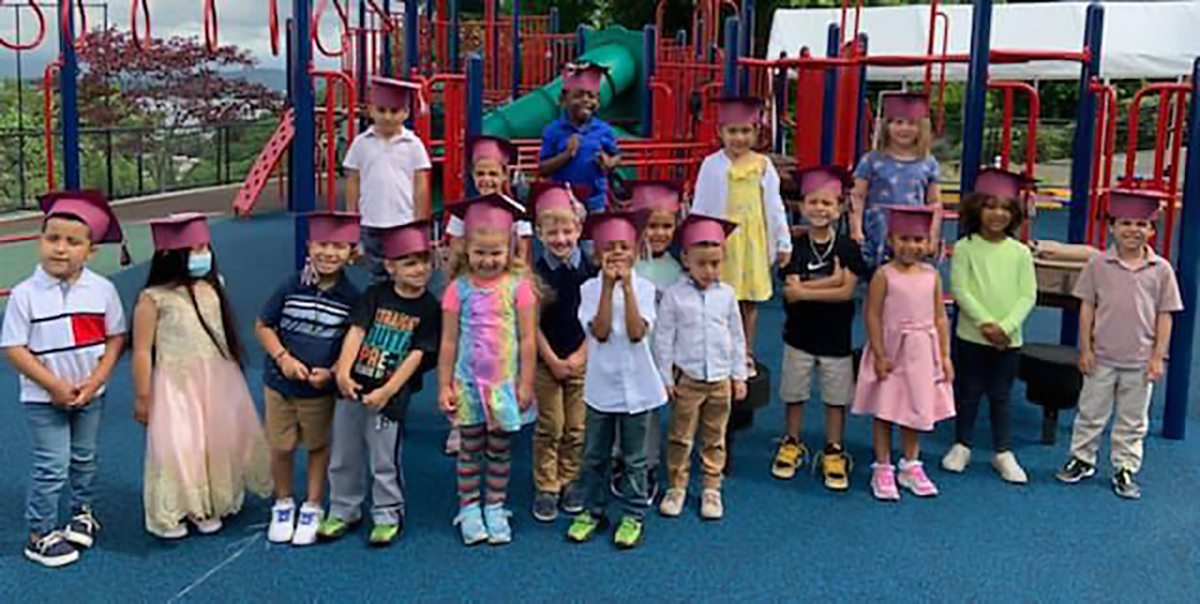
Helping Your Preschooler Adjust to Day Care or Preschool
By Terry Becker, LMSW
Director of Family and Children’s Services, Ossining Children’s Center*
Separation anxiety in a young child is a healthy response to being apart from the people and places he or she is attached to and facing the unknown. This reaction should not be confused with mental health issues, particularly for preschoolers. However, there are a number of things one can do both in the weeks before he or she enters a program and during the first few days after enrollment that will support your child’s adjustment.
Prior to the child’s entrance into preschool:
- Be sure to make arrangements for childcare that you feel confident about. Your anxiety about childcare arrangements or guilt about leaving may add to your child’s distress.
- For a three- or four-year-old, begin telling him about his program about two weeks in advance.
- Before leaving him at the preschool or day care, visit the school and meet the teacher with your child.
- Read books with your child about going to preschool. Role-play the event with him.
- Take your child shopping for items for school, e.g. backpack, school clothes, etc.
- Find out if there is a child in the class with whom you can schedule a play date in advance.
Once “school” starts:
- Allow your child to bring a beloved stuffed animal or blanket to class.
- When leaving, give a quick kiss and hug and cheerfully say good-bye. Tell your child when you will be back, linking it to something concrete like “after nap” or “after snack.” Be sure to return at this time. Never sneak out, as this undermines your child’s sense of trust.
- Don’t prolong your departure or come back several times, even if your child seems upset. If you are concerned that he/she may be struggling, give a call to the teacher during the day to get an update. Know that some tears in the beginning are normal and expected; in most cases, this reaction will diminish within the first week or two as your child adjusts.
If your child is experiencing intense separation anxiety –
- Tell him or her that you understand that it can be hard at first to be away from those that he loves. Provide empathy and acceptance, but not excessive sympathy.
- Never make fun of or reprimand a child for his struggles with separation.
- Recall with your child previous challenges that he has dealt with by being brave.
- Provide a photo of Mom and/or Dad for your child to keep with him.
- Only if your child does not begin to adapt by the second or third week (i.e., he continues to cry throughout the day), should you re-consider the appropriateness of the setting or your child’s readiness to be in group care.
*The Ossining Children’s Center provides high quality, educational care for children ages 8 weeks through 12 years. Its programs are housed in a brand new, award-winning facility at 32 State Street in Ossining. A tuition assistance program aims to keep its programs affordable for all working families. For more information visit www.OssiningChildrensCenter.org.


